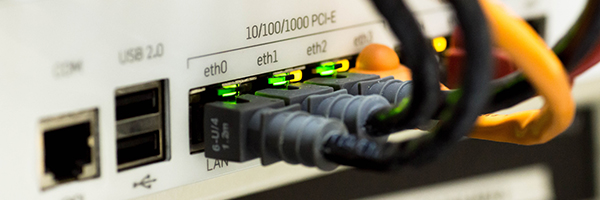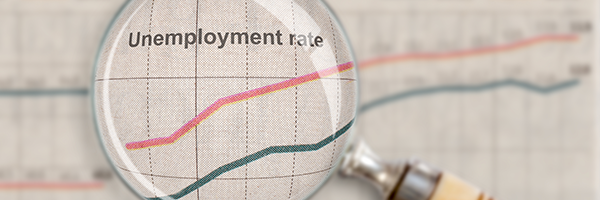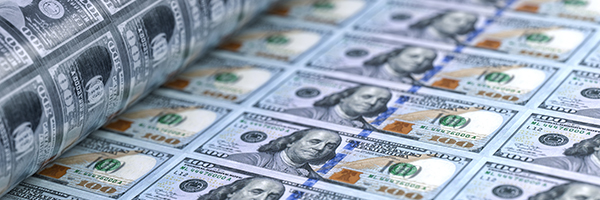 April 26, 2025
April 26, 2025
What You Need to Know Today:
Even the best retail stocks aren’t beating fears of a slowdown: I’m selling Walmart and Costco
With fears of an economic slowdown punishing the market today, I think it’s more than time to sell my Jubak Picks positions in Walmart (WMT) and Costco Wholesale (Cost) even though they are the two best companies in the retail sector. As of noon New York time today Walmart is down another 3.57% and Costco has dropped 2.64%. The Standard & Poor’s 500 is lower by 2.21% and the NASDAQ Composite is off 3.55%.

If the market keeps mis-pricing fear, it’s time to buy some VIX fear options
When AI stocks plunged on Monday on the news out of China’s AI startup, DeepSeek, and fears that this meant the end of the AI ‘bubble,” shares of AI stocks such as Nvidia (NVDA) and Broadcom (AVGO) plunged 17% and the NASDAQ Composite tumbled. But the market as a whole was remarkably unperturbed. The CBOE S&P 500 Volatility Index (VIX), the “fear index” did climb by 20%.
TO ALMOST 18. 18? The 10-year average for the VIX is 18.26! So with the prospect of a collapse in the AI bubble–which I don’t see despite clear extremes of valuation in the sector–the AI trend is real and revolutionary. With the possibility that the Federal Reserve will dash hopes for interest rate cuts in 2025. With the possibility that a renewal of the 2017 Trump tax cuts and new tariffs will revive inflation. With the possibility that the ungovernable extremes of the Republican party will be unable to govern and will really shut down the government in a huge debt ceiling/budget fight. With all of that danger lurking out there, the VIX traded at just 18 on Monday and closed at 16.56 today, January 29? In my opinion this hedge on risk is on sale.

Fed keeps interest rates steady; Powell says no hurry to cut rates
The Federal Open Market Committee voted unanimously today to keep the Federal Funds rate unchanged in a range of 4.25%-4.5%, after lowering rates by a full percentage point in the final months of 2024. Federal Reserve Chair Jerome Powell said officials are not in a rush to lower interest rates, adding the central bank is pausing to see further progress on inflation following a string of rate reductions last year.

Everybody hold on: the data on China’s AI bombshell DeepSeek is still coming in
One of the key questions for AI investors and for companies trying to decide which platform to use to build their AI apps is How accurate is DeepSeek?
Early reports put the model’s accuracy on a par with U.S. platforms from Open AI, Meta Platforms, and Alphabet. For example, DeepSeek R-1, the latest iteration, achieved a 71.0% Pass@1 accuracy on the AIME 2024 benchmark, which improved to 86.7% with majority voting. That beat results for OpenAI’s o1-0912 model. On the MATH-500 benchmark, DeepSeek R-1 scored 95.9%, outperforming o1-0912. While I still haven’t read any convincing new evidence that suggests DeepSeek’s platform isn’t as fast or as accurate on tasks such as numerical logic as those from U.S. competitors, there is a new report today from a credible expert source that suggests the accuracy of query results isn’t as good as the accuracy of a competitive query engine such as ChatGPT. The problem seems to go deeper too than censorship on topics sensitive to China’s government.

Market is still looking for 2 rate cuts in 2025, CNBC survey says
We won’t get another update on the probable trajectory of Federal Reserve interest rate policy until the central bank updates its Dot Plot projections at its March 19 meeting. But meanwhile, we have a survey from CNBC that shows a majority of respondents–and this is a small sample of hust 25–still believe we’ll get two interest rate cuts from the Fed in 2025. But that faith in that two-cut scenario is fading.

As tech sells off in a rout, where’s the fear?
Don’t think traders and Wall Street market strategists haven’t noticed: on a day when AI stocks like Nvidia (NVDA) and Broadcom (AVGO) fell 17% each, the Dow Jones Industrial Average added 0.4%. Yes, Wall Street’s “fear gauge”—-the VIX—soared 20% the most since mid-December–but it closed the day just below 18. That’s near the index’s historical rage of normal. When the markets really afraid the VIX spikes into the 30s or even into the 40s. On a day when AI tech stocks crumbled, the market as a whole didn’t seem especially fearful.

Special Report: 10 Penny Stock Home Runs–Pick #2 PILBF
This one is very simple. When the price of lithium rebounds, high-quality low-cost lithium producers will see the revenue roll in. That’s why I’d got the world’s leading lithium-producer Albemarle (ALB) in my long-term 50 Stock Portfolio. But a smaller, high-quality, low-cost producer like Australia’s Pilbara Minerals will show gains even higher than Albemarle since the current price of $2.29 a share comes close to discounting the company’s survival.
Live Market Report (20 minute delay)

Special Report: 10 Great Growth Stocks that Are Getting Greater–today my 6th pick Danaher
GREATER Growth Stock Pick #6: Danaher (DHR). Danaher is a smart (that’s key) serial acquirer–and asset divester–in the life sciences space. And that makes this stock very interesting in an environment where small, young life sciences companies might be looking for help/rescue/acquisition because they can’t raise capital in a tough part of the credit cycle. I like Danaher now, as well, because the stock looks to have just about completed its re-rating after a spike in sales during the Covid pandemic led to over enthusiasm about the stock.

China slips back into deflation in October–not a good sign for the global economy
China slipped back into deflation in October, according to government data released over the weekend. China had shown a recovery from August deflation in September readings, but that recovery now looks temporary. As worrying as the deflation tag itself is the cause: week domestic demand.

Saturday Night Quarterback says, For the week ahead expect…
Maybe. Must maybe. All eyes will be on the Federal Reserve meeting on December 13.

U.S. economy added stronger than expected 199,000 jobs in November
The U.S. economy added 199,000 jobs in November, the Labor Department reported today, Friday, November 8. The unemployment rate dropped to 3.7% from 3.9% in October That surprised economists who had expected the unemployment rate to hold steady. The bond market reacted in the morning hours after the report was released at 8:30 a.m. New York time by selling Treasuries. The yield on the 10-year Treasury gained 8 basis points to 4.233% as of 10 a.m. in New York as bond prices fell. The yield on the two-year Treasury jumped 78 basis points to 4.669%.

Today’s inventory report points to expected slower GDP growth for the fourth quarter
Ever since reports showed the U.S. economy grew at a 5.2% annualized rate in the third quarter, economists have been telling investors to expect lower growth in the fourth quarter. Some of that higher growth in the third quarter, they argued, was pulled from the fourth quarter.
Today’s report from the Commerce Department showing a 0.4% drop in wholesale inventories in October supports the economists’ argument.

Initial claims, continuing claims for unemployment show a modestly slower jobs market
It’s probably not enough to push the Federal Reserve to cut rates on the schedule that Wall Street is hoping for –with the first cut in March 2024–but it does make a “no increase in interest rates” result from the December 13 Fed meeting even more likely.

Special Report: 10 Great Growth Stocks that Are Getting Greater–My first 8 picks
Here are the first 8 picks for my GREATER Growth Stocks Special Report. More on the way.

Moody’s cuts China bond rating on worries over debt load
Moody’s Investors Service cut its outlook for Chinese sovereign bonds to negative from stable today, December 5. The rating company kept tws long-term rating on China’s government bonds at A1. You don’t have to be a forensic accountant to see what worries Moody’s.

Jobs market continues to slow: I’m sure that makes the Fed happy, but how do “real” people feel?
In October job openings in the U.S. economy fell to the lowest level since early 2021. I’m sure that make the Federal Reserve happy ahead of its December 13 meeting on interest rates. The Fed has been looking for sign that the labor market is cooling off. And it’s getting plenty of them recently. (And will probably get more on Thursday and Friday when the government reports new claims for unemployment and the jobs situation for November.) The question, for those few of us who still see a recession in 2024 as a danger, is When is slower too slow? A slowing labor market means fewer gains to average weekly earnings. Which translates into either less consumer spending, or consumer spending fueled by more debt.

Some in the bond market are saying the bond rally has been too far, too fast
I’m hearing some chatter that says bond traders and analysts are stepping aside from the bond rally. Or are planning to do so. Their argument is that the move has been too far, too fast. Specifically, I’ve heard talk of selling if the yield on the 10-year Treasury hits 4.00%. On Friday, the yield was 4.20%. So I’d be watching to see if anything like a bond rally pause or reversal materializes during the days ahead of the Federal Reserve meeting on December 13

Saturday Night Quarterback says (on a Monday), For the week ahead expect…
I expect a nervous market this week as investors and traders look ahead to Thursday’s weekly report on initial claims for unemployment and Friday’s report on the jobs numbers for November.

Gold hits record high–Don’t chase gold; buy gold stocks
Gold (for February 2024 delivery) was trading at $2087 an ounce on New York Comex today, December 1. That easily beats the old record high of $2051.50 an ounce back in August 2020. The shiny metal is up 12% from $1830 an ounce in early October. The SPDR Gold Shares ETF (GLD), which holds gold, is up 2.53% in the last month as of November 30. History, and the price action on the Gold Shares ETF, tells us that at this point in a strong gold rally, it doesn’t pay to chase gold itself, but it does pay to buy shares of gold miners.

Powell tries to temper Wall Street belief in rapid interest rate cuts but no one is listening
It wasn’t the most forceful pushback it’s true, but the financial markets paid attention to Federal Reserve Chair Jerome Powell’s attempt to say interest rate cuts aren’t just around the corner for about two minutes. And then the rally based on a belief in 4 or 5 cuts in 2024, and as early as March (and certainly by May), was off and running again.

OPEC announces production cuts but oil traders don’t believe it
OPEC+ agreed to a surprise new oil supply cut of about 900,000 barrels a day at today’s meeting. But oil prices fell anyway. Turns out that nobody believes that the organization will deliver on its promises. Members including Russia, the United Arab Emirates, Kuwait and Iraq pledged the extra reductions after an online meeting, OPEC said. And Saudi Arabia promised to continue its unilateral 1 million barrel-a-day cut through the first quarter. But, critically, the cuts are voluntary.

Put a fork in it! Interest rates will definitely be on hold at December meeting, the market decides
The Dow Jones Industrial average soared 1.47% today–or 520 points–as the Federal Reserve’s favorite inflation measure showed that inflation continued to fall in October. The inflation news, the market decided, was exceedingly good news for the old economy stocks in the Dow 30. In contrast, the new economy stocks in the NASDAQ Composite fell 0.23% on the day.

So how low can lithium prices go? When do you buy battered lithium stocks?
At least the hand-over-fist selling of lithium stocks stopped for a day. Albemarle (ALB), the big and low-cost producer, did experience another 0.43% drop today, November 29. But that was still way better than the 6.3% plunge on Monday. And shares of Lithium Americas (LAC) and qm (SQM) managed gains of 1.38% and 0.98%, respectively. There’s no mystery to the drop. Lithium prices have continued to fall. As o Monday, Chinese prices for lithium carbonate have dropped 20% so far in November and 75% for 2023 to date.

GM pops on dividend hike and share repurchase–selling out of Jubak Picks portfolio
Shares of General Motors (GM) are up 11.39% today, November 29, on news that the company will boost its dividend by 33% (to 12 cents a share from 9 cents) and repurchase $10 billion of shares. I’m selling my position in the stock in my 12-18 month Jubak Picks Portfolio. That position is now down 10.03% since I added it to the portfolio on October 4, 2022. I don’t see anything in this report that changes the fundamentals of GM’s car business. Yes, the company demonstrates today with its biggest-ever buyback plan that its legacy gas-powered vehicle business throws off tremendous amounts of cash. Now. But the company has pulled back on many of the expensive investments that would have brought GM into the electric vehicle future.

China’s limits on graphite exports, a key ingredient in electric car batteries, go into effect this week
Meetings between presidents come and go, but China’s efforts to capture the high ground in technologies for the future economy–and to defend that ground once captured–just go on. On December 1 China will begin requiring export permits for some graphite products, another attempt to control critical mineral supply in response to challenges to its global manufacturing dominance. Beijing’s move to restrict graphite exports will have a disproportionate impact on foreign makers of electric vehicle battery components who have not yet shifted to using as much synthetic material as Chinese counterparts, industry insiders and experts told Reuters.

Economists project that the rate at which inflation is falling will slow–does the Fed care?
The pace of improvement in the U.S. inflation rate is set to slow in the coming year. According to the economists surveyed by Bloomberg in its latest monthly outing, the core personal consumption expenditures (PCE) price index-—-the Federal Reserve’s preferred measure of inflation–will still be running at a 2.5% pace at the end of 2024. That’s up slightly from the 2.4% prediction in last month’s Bloomberg poll. Importantly it’s still significantly higher than the Fed’s 2% target inflation rate.

This looks like some profit taking among tech stock winners
Hedge funds are unwinding some of their overweight positions in technology stocks after their concentration in the sector reached record levels, according to Goldman Sachs. Net selling in tech, media and telecom stocks last week was the most since July, Goldman Sachs wrote in a note today. Information Technology (XLK) and Communication Services (XLC) were the most net sold sectors, Goldman said. And, among subsectors, sales of software stocks, chips and chip equipment and interactive media and services “were by far the most net sold.” The outweighed buying in IT services and media.”



